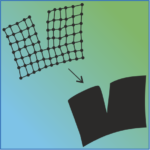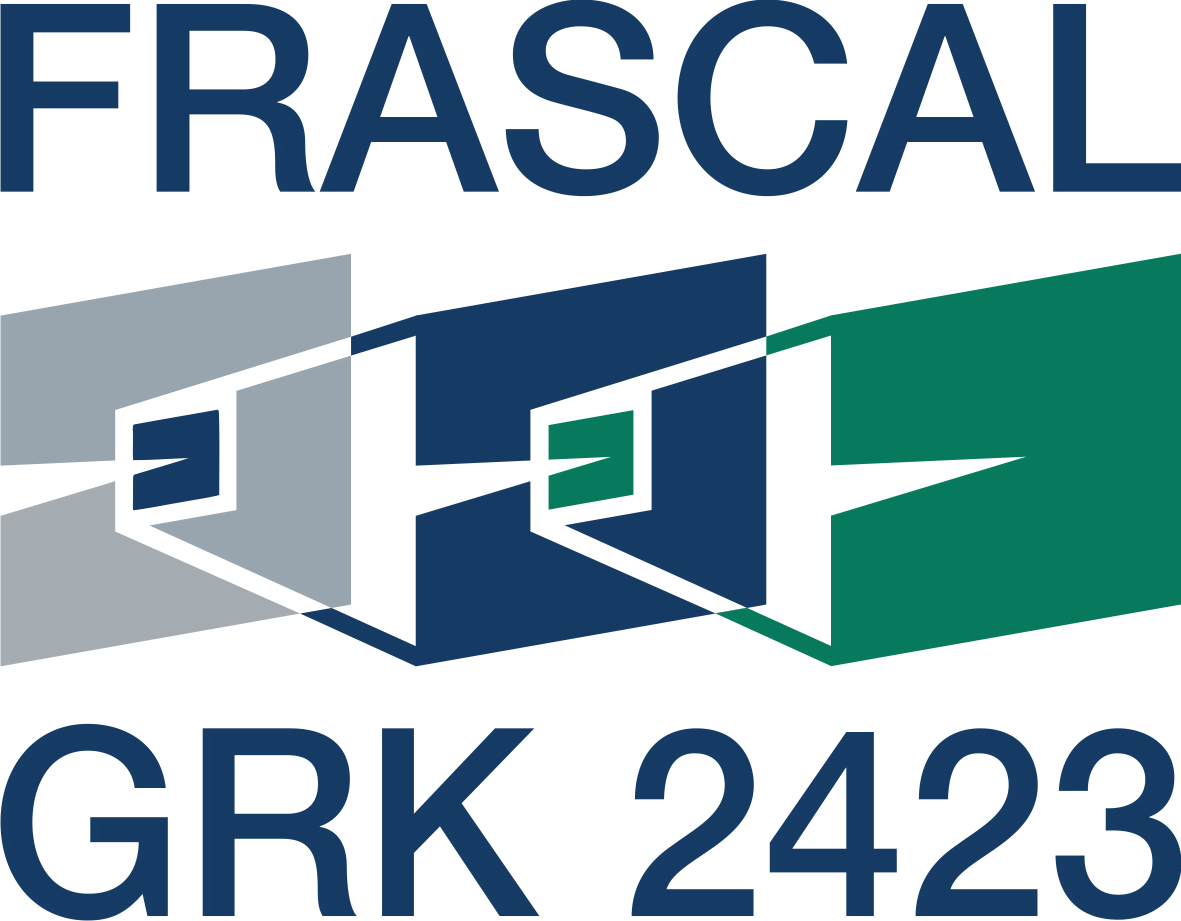P14 – Passage from Atomistic-to-Continuum for Quasistatic and Dynamic Crack Growth
 Motivation
Motivation
Following the seminal work [FrMa98], a natural framework for studying crack paths and their time evolution by variational methods is given by so-called free discontinuity problems. Prominent examples of such variational models are Griffith energy functionals comprising linear elastic bulk contributions for the sound regions of the body and surface terms along the crack. Static existence and regularity results for minimisers have been subject of intensive study in the last decade and have also been identified as effective limits derived from atomistic lattices in the realm of Molecular Mechanics by means of Gamma-convergence [FrSc15a, BaBrCi20]. In order to analyse the time evolution of crack geometries, a sound framework for existence of continuous–time evolution goes back to [FrLa03] in the setting of antiplane shear displacements and has been recently generalised to vectorial problems in linearised elasticity [FrSo18]. By now, a clear understanding of the connection between quasi-static crack evolution and the passage from atomistic-to-continuum systems is completely missing.
Objectives
Our goal is to establish a rigorous connection between atomistic and continuum models in brittle fracture for the prediction of quasi-static crack growth. Based on identifying effective continuum models via Gamma-convergence for general atomistic lattices, a time-incremental scheme is set up to prove convergence of atomistic-to-continuum quasi-static crack evolutions.
Work plan
We extend the rigorous identification of Griffith models from atomistic systems governed by Lennard-Jones interactions [FrSc15a] to general lattice systems including long-range and multi-body interactions. Here, we will apply techniques from the paper [BaBrCi20] and complement their analysis by showing the Cauchy-Born rule in the setting of small displacements. Applying the Gamma-convergence approach to composite materials, we also aim at studying the influence of different mesoscopic on the macroscopic fracture properties. This connects our perspective to projects P8 and P11. Our main goal is then to establish existence of an atomistic continuous–time evolution and relate it rigorously to continuum quasi-static evolutions [FrLa03, FrSo18] by means of evolutionary Gamma-convergence for rate-independent systems. Here, a key issue consists in verifying stability of unilateral minimisers along the irreversible fracture process.
[BaBrCi20] A. Bach, A. Braides, M. Cicalese, „Discrete-to-continuum limits of multi-body systems with bulk and surface long-range interactions“, SIAM J. Math. Anal. 52, 3600-3665 (2020)
[FrLa03] G. A. Francfort, C. J. Larsen, „Existence and convergence for quasi-static evolution in brittle fracture“, Comm. Pure Appl. Math. 56, 1465-1500 (2003)
[FrMa98] G. A. Francfort, J. J. Marigo, „Revisiting brittle fracture as an energy minimization problem“, J. Mech. Phys. Solids 46, 1319-1342 (1998)
[FrSc15a] M. Friedrich, B. Schmidt, „On a discrete-to-continuum convergence result for a twodimensional brittle material in the small displacement regime“, Netw. Heterog. Media 10, 321-342 (2015)
[FrSo18] M. Friedrich, F. Solombrino, „Quasistatic crack growth in 2d-linearized elasticity“, Ann. Inst. H. Poincare Anal. Non Lineaire 35, 27-64 (2018)
